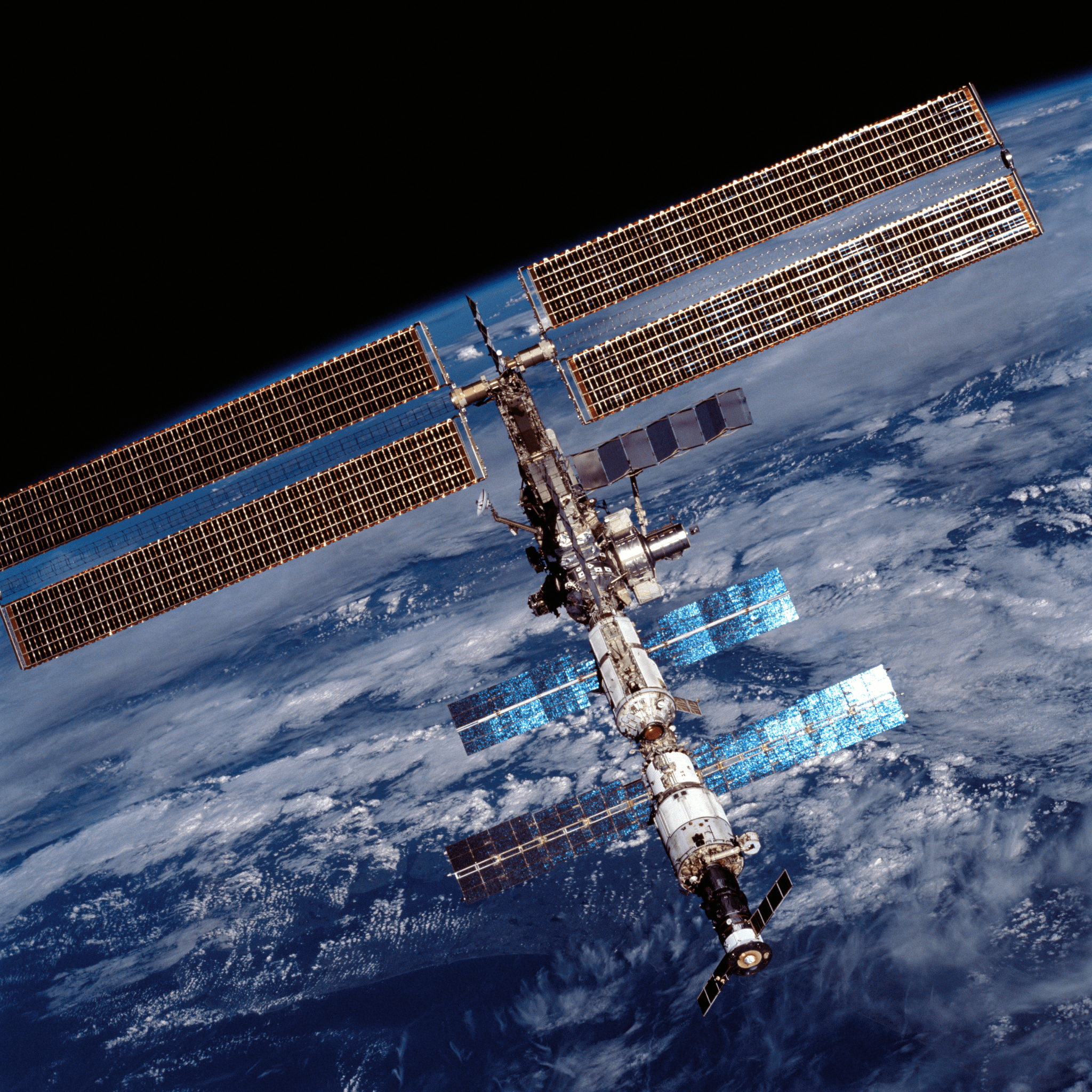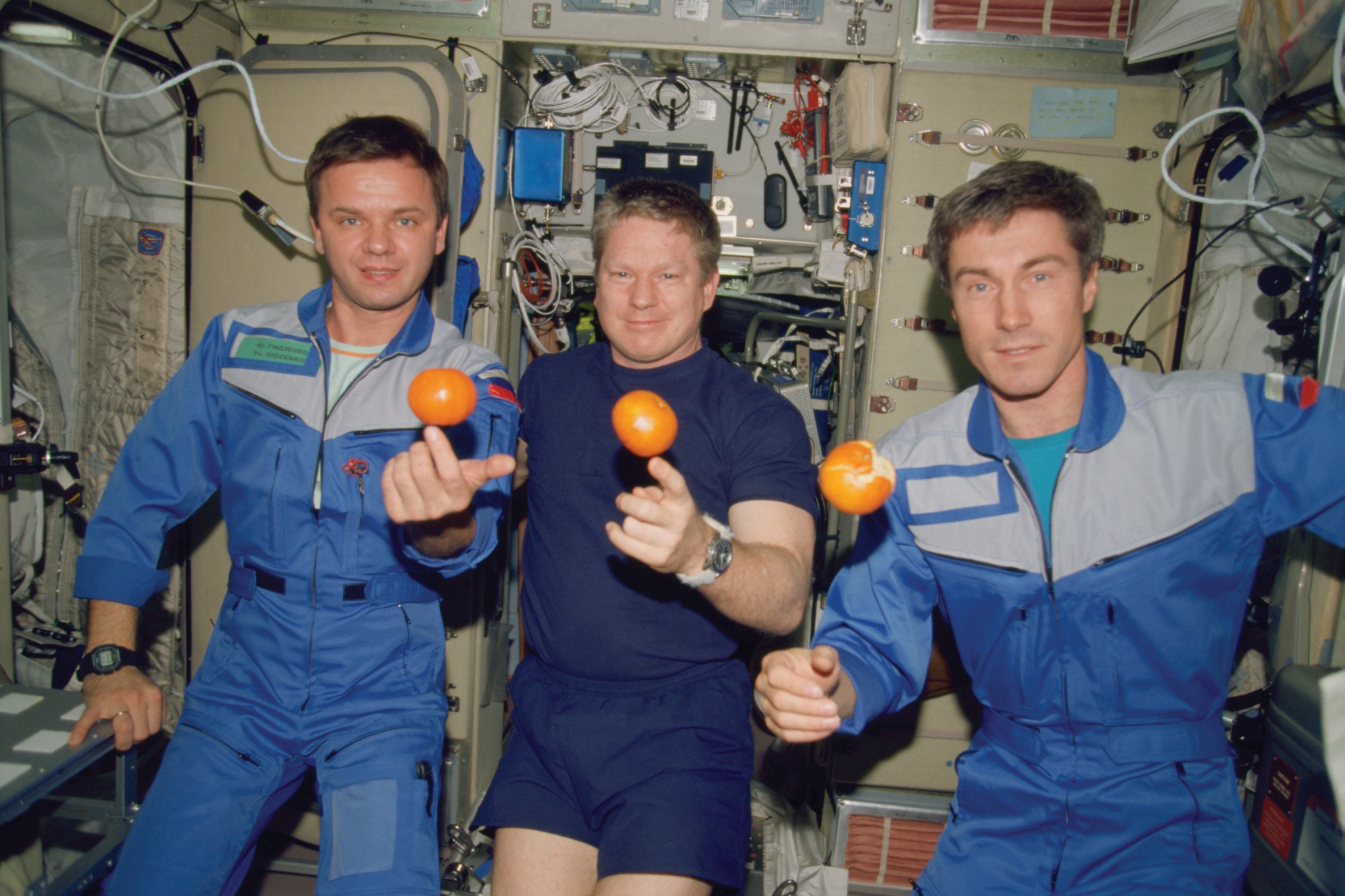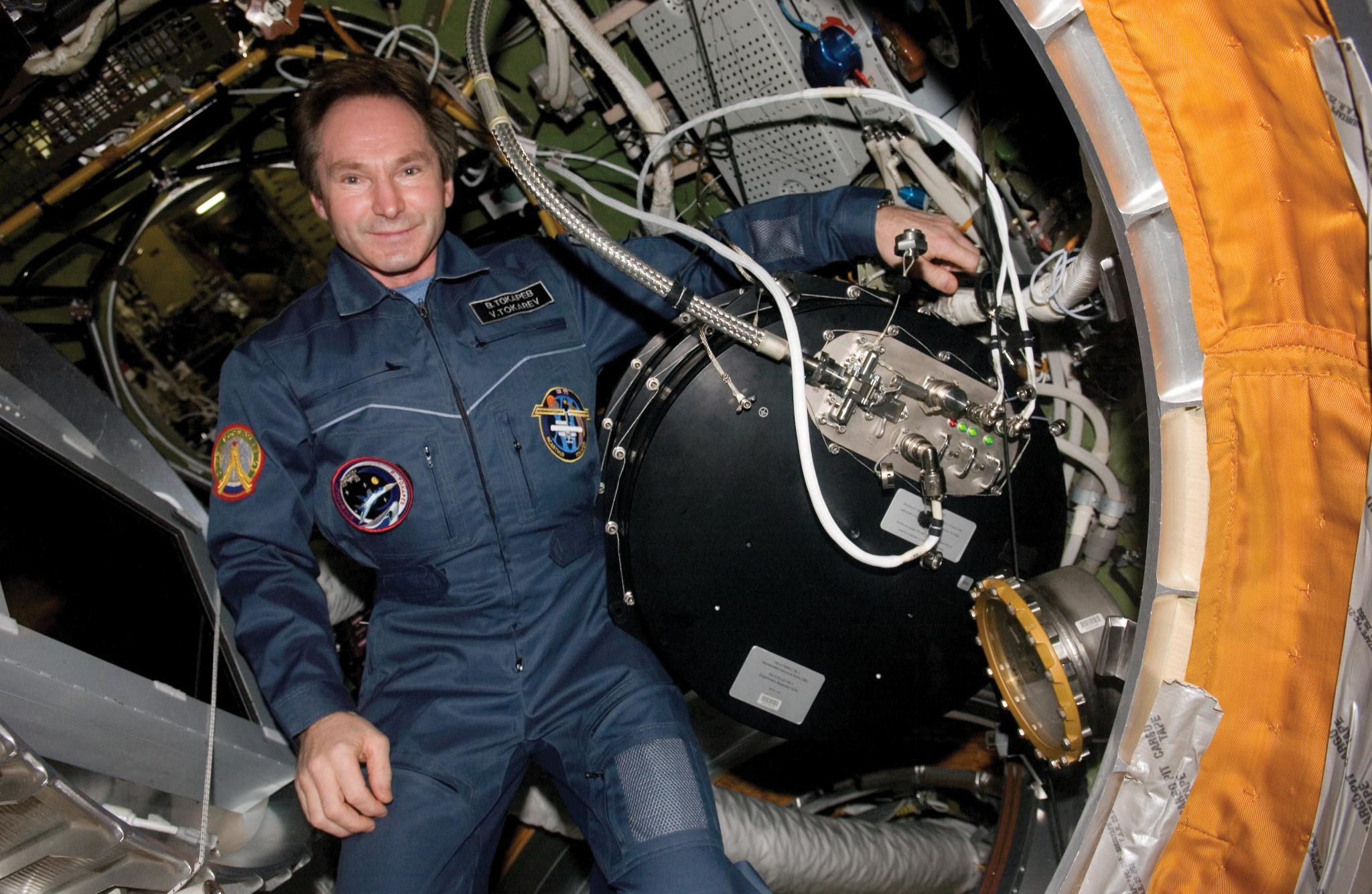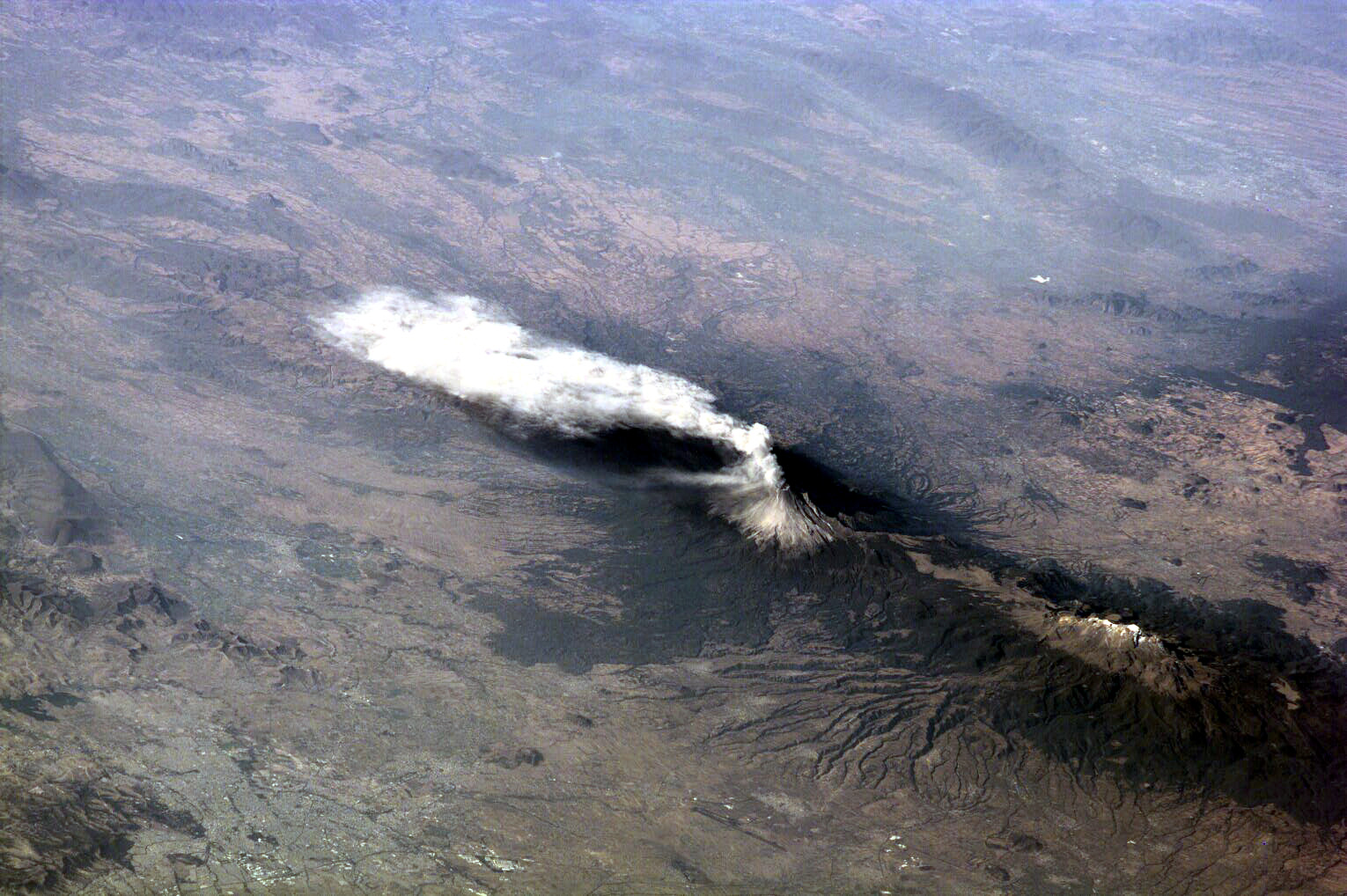On November 2, 2000, Russian cosmonauts Yuri Gidzenko and Sergei Krikalev and NASA astronaut Bill Shepherd commenced continuous operation of the world’s first truly international space laboratory. At the start of Expedition 1, the International Space Station was more of an outpost on the edge of space than a microgravity laboratory. Consisting of the U.S. Unity node and Russian Zarya and Zvezda modules, the station offered less than 200 cubic meters (260 cubic yards) of pressurized volume, roughly equivalent to a one-bedroom apartment, and about 3 kilowatts of power.
During their 4-month mission, the Expedition 1 crew worked on approximately 50 science and technology investigations. Many focused on the performance of critical station systems; documentation of the acceleration, vibration, and the acoustic environments on board; and studies of their physical adaptations to extended time in the microgravity environment. These investigations helped to lay the groundwork for the future evolution of research aboard the International Space Station.
As part of crew health monitoring, the first of many investigations of crew viral shedding on station was initiated. Studies of this phenomenon, first documented on space shuttle missions, led to the identification of reactivation of latent herpes viruses in crew as a potential health risk on long-duration space missions. This reactivation is typically “subclinical,” meaning crew are not truly sick and do not exhibit symptoms.
While changes in immune function during a space mission, such as viral shedding, continue to be a focus in preparation for exploration efforts to the Moon and Mars, this specific research also provided direct benefits to the rest of us on Earth. Technologies for saliva and urine testing designed for this research were patented and led to rapid virus-detection tests that are used today for diagnosing common ailments on Earth such as mononucleosis, herpes, and chicken pox.
The Plasma Kristall-3 (PK-3) investigation was one of the first physical science experiments performed on the space station. The Max Planck Institute for Extraterrestrial Physics in Germany and the Institute for High Energy Densities, part of the Russian Academy of Sciences, collaborated on this study of the formation and behavior of plasma crystals. Plasma crystals form under certain conditions in a complex (dusty) plasma. There, the electrically charged dust particles arrange in a regular macroscopic crystal lattice. In microgravity, scientists can grow plasma crystals larger than possible on Earth, making the station ideal for these experiments. Indeed, these collaborators have continued performing experiments over the life of the station.
Cold plasma can permeate many materials and spread evenly and quickly. It can disinfect surfaces and has been proven to neutralize some drug-resistant bacteria within seconds. Thus, there are many Earthbound benefits from research into plasma crystals. Plasma research on station from this collaboration has contributed to the licensing of seven families of patents and the creation of three companies active in industries dealing in hygiene, medicine, water purification, odor control, car exhaust technology, and medical treatments for wound care and skin disease treatment.
Products in development currently include a miniaturized wound treatment device that can create plasma from ambient air without using a gas tank. This capability could expand uses from hospital settings to doctors’ offices, patients’ homes, and even remote locations worldwide.
Expedition 1 also initiated crew photography-based Earth observations research on the space station. From the platform’s unique vantage point, the crew used hand-held cameras to capture images of hurricanes, cities, and geographical features of interest. These photos added to long-running image-capture programs reaching back to the 1960s for both the Russian and U.S. space programs.
Crew photography has continued over the life of the station. As of September 2021, nearly 4 million Earth photos are publicly available to researchers interested in studying environmental changes over many years and decades. Well over 3 million of them have been taken aboard the International Space Station over the past 20 years.
As impactful as these first research accomplishments were, Expedition 1’s greatest accomplishment was to set the stage for all that followed. Over the next two decades of station use, new modules and research facilities have been added and the variety of research supported by the orbiting laboratory has expanded into new fields of science and technology while contributing to economic development.
Read more about Expedition 1 from the perspective of cosmonaut Sergei Krikalev


































